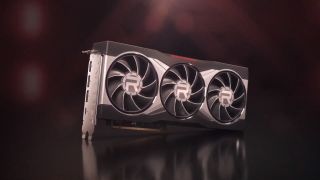AMD’s RDNA 3 graphics cards could arrive much later than Nvidia’s RTX 4000
With Zen 4 CPUs turning up just before RDNA 3, going by the rumor mill

AMD’s next-gen graphics cards might not be out until November, with Zen 4 CPUs debuting just before the RDNA 3 GPUs.
This rumor comes from one of the Twitter hardware leakers with a better track record, Greymon55, but we should of course help ourselves to a couple of handfuls of salt here – and remember that even if this is AMD’s intended plan right now, that could change.
Launch: late October, no later than mid-November😉June 14, 2022
As you can see, the purported launch date for what should be RX 7000 GPUs is late October, or possibly mid-November, and no later than that (well, it couldn’t really be much later given that RDNA 3 cards are scheduled for this year, and at that point, there’s not much of 2022 left).
It’s notable that Greymon sounds confident enough in this prediction, adding in a further tweet that this is “new info and very reliable”.
The leaker also responds to clarify that Ryzen 7000 CPUs will launch a bit before RDNA 3, possibly in late September or early October. Again, let’s be careful about putting too much weight on that assertion, but this isn’t the first time we’ve heard a September date pinned on the launch of Zen 4 chips.
Analysis: Nvidia to beat AMD to the next-gen GPU punch – and by some way?
Previously the rumor mill has theorized that AMD is going to kick off with RDNA 3 graphics card in Q4, but all along, the only promise Team Red has made is that these next-gen GPUs will be out before the end of 2022.
There was a suggestion from one leak that the mid-range RX 7000 models – built on the Navi 33 GPU – might just sneak out before Q4 rolls around, but this new rumor certainly pours cold water on that idea. It seems increasingly clear that we’re looking at Q4 now, and indeed this is a reality check that we’ll be lucky to see the first RDNA 3 product in October, really, as the ‘late’ October prediction makes that month seem a bit more tentative.
Get daily insight, inspiration and deals in your inbox
Get the hottest deals available in your inbox plus news, reviews, opinion, analysis and more from the TechRadar team.
The problem for AMD is that Nvidia is rumored to be getting its RTX 4000 series off the ground in September most likely – though we’ve heard a few dates floating about (even August, in fact, for what’s supposedly going to be the first Lovelace GPU, and that’s the RTX 4090).
So broadly, AMD is looking like it might be a couple of months behind Nvidia with RDNA 3 graphics cards, which would give Team Green quite an opportunity to establish itself in the market with next-gen products. Not an ideal situation for AMD, particularly as if the most recent rumor is right, by November Nvidia will have its RTX 4070 deployed, alongside the RTX 4090 and 4080 (which are supposedly due in September and October respectively).
While we don’t know what card AMD will produce from its RX 7000 deck first, it’s interesting to note that rumors previously pointed to Navi 33. When questioned about whether that might still be the case – or if it could be the flagship Navi 31 offering debuting first, as VideoCardz now seems to believe – Greymon wasn’t drawn to comment (whereas the leaker responded to other questions in that tweet). That seems to indicate that while confident about the overall launch schedule, Greymon isn’t so sure about which graphics card AMD might get out of the door initially.
AMD may feel the need to make a big impact with the flagship as the initial launch – running with an all-new multi-chip design as was recently confirmed – or the better (or indeed only viable) strategy may be to get a more affordable mid-range Navi 33 model launched first.
Or alternatively, we could witness the simultaneous arrival of multiple RDNA 3 GPUs, but if Nvidia already has its top three Lovelace graphics cards out there – pushed out in staggered fashion across the previous couple of months – by the time that AMD launch rolls around, that’s going to give Team Green a fair old head start, as we already mentioned.
Unless Nvidia elects to use the extra time to hold the release of RTX 4000 GPUs for an additional month, kicking off with the RTX 4090 in October rather than September, in order to sell off existing RTX 3000 stock, which is another possibility that’s filtered down from the grapevine recently. The rumors around this are something of a writhing nest of possibilities, for sure, but one way or another, the overriding sentiment is that Nvidia appears to have an advantage in terms of having the luxury of time, and perhaps still a choice to make on how to best use that.
Darren is a freelancer writing news and features for TechRadar (and occasionally T3) across a broad range of computing topics including CPUs, GPUs, various other hardware, VPNs, antivirus and more. He has written about tech for the best part of three decades, and writes books in his spare time (his debut novel - 'I Know What You Did Last Supper' - was published by Hachette UK in 2013).
Most Popular

